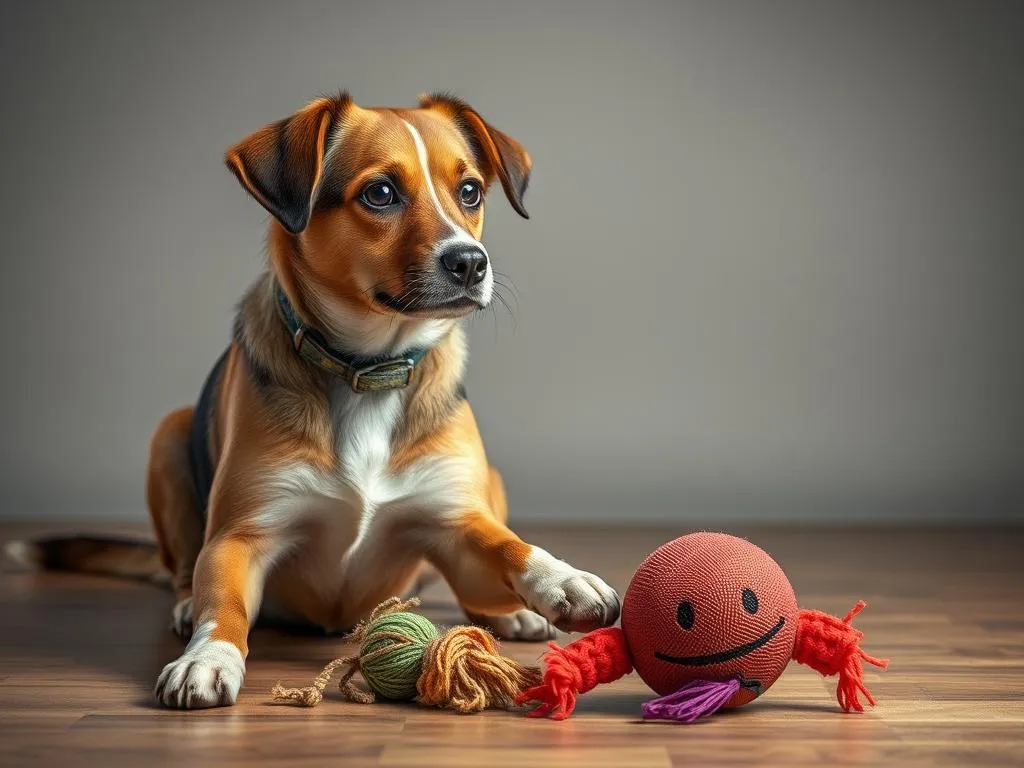
Dogs are often seen as playful companions, but many owners face the frustrating issue of their furry friends destroying toys. Understanding why your dog might be engaging in this behavior is crucial to teaching them appropriate play habits. Statistics show that about 70% of dog owners report issues with their pets destroying toys at some point. This article will delve into the reasons behind this behavior and provide practical training techniques to change it.
Understanding Why Dogs Destroy Toys
Natural Instincts
Dogs have a natural instinct to chew, which can stem from their history as hunters and scavengers. Chewing helps keep their jaws strong and teeth clean. Different breeds may exhibit varying tendencies toward destructive behavior; for example, terriers are known for their strong prey drive, making them more likely to shred toys. Understanding this instinctual behavior is the first step in addressing the problem.
Boredom and Lack of Stimulation
Boredom is another significant factor contributing to a dog’s tendency to destroy toys. When dogs do not receive enough physical exercise or mental stimulation, they often turn to their toys as a source of entertainment. Signs of boredom may include excessive barking, digging, or destructive chewing. If your dog is spending long hours alone without stimulation, it’s essential to rethink their daily routine.
Separation Anxiety
Separation anxiety can lead to destructive behaviors as well. Dogs that experience anxiety when left alone may resort to chewing and tearing apart their toys as a coping mechanism. Signs of separation anxiety include excessive whining, pacing, or destruction of household items when their owner is away. Recognizing these signs is vital to addressing the underlying issue.
Toy Quality and Suitability
Not all toys are created equal, and the quality of the toys you provide can impact your dog’s behavior. Choosing toys that are appropriate for your dog’s size and chewing strength is essential. Low-quality or unsuitable toys can easily be destroyed and may even pose safety risks. Always opt for durable toys designed to withstand the wear and tear of enthusiastic play.
Preparing for Training
Assessing Your Dog’s Behavior
Before starting any training regimen, it’s essential to observe and document your dog’s destructive behaviors. Take note of when and where these behaviors occur, as well as any triggers that might lead to toy destruction. This information will help you identify patterns and create a more effective training plan.
Setting Realistic Expectations
Changing a dog’s behavior takes time, so it’s important to set realistic expectations. Understand that progress may be gradual, and some setbacks may occur. Consistency is key in reinforcing the behaviors you want to see, so be patient with your furry friend as they learn.
Choosing the Right Training Tools
Selecting the right training aids can make a significant difference in your efforts. Durable chew toys and puzzle toys that challenge your dog mentally can provide healthy outlets for their energy. Look for toys specifically designed for heavy chewers, which can withstand vigorous play and help prevent destruction.
Training Techniques to Prevent Toy Destruction
Positive Reinforcement
One of the most effective methods for teaching your dog not to destroy toys is through positive reinforcement. This technique involves rewarding your dog for exhibiting the desired behavior. Whether using treats, praise, or playtime, finding what motivates your dog will help encourage appropriate play. For instance, if your dog plays gently with their toy, reward them immediately to reinforce that behavior.
Redirecting Attention
When you catch your dog in the act of destroying a toy, it’s essential to redirect their attention quickly. This might involve offering them an appropriate toy or engaging them in a game. Timely intervention is crucial; the sooner you redirect their energy, the more likely they will understand what is acceptable.
Teaching the “Leave It” Command
Teaching your dog the “leave it” command can be a game-changer in preventing destruction. Here’s a step-by-step guide:
- Start with a treat: Hold a treat in your hand and let your dog sniff it.
- Close your hand: When your dog tries to get the treat, close your hand and say “leave it.”
- Wait for calmness: Once your dog stops trying to get the treat and backs away, praise them and give them the treat.
- Practice regularly: Repeat this exercise and gradually introduce distractions, always rewarding calm behavior.
This command can be invaluable in preventing your dog from destroying toys and other household items.
Creating a Suitable Play Environment
A well-structured play environment can significantly reduce destructive behavior. Set up a designated play area filled with safe and engaging toys. Incorporate interactive play and puzzles that stimulate your dog’s mind. Regular play sessions also help burn off excess energy, making your dog less likely to engage in destructive behavior.
Addressing Underlying Issues
Increasing Physical Exercise
Physical exercise is crucial for a dog’s overall well-being. Ensure your dog receives regular walks, playtime, and activities that promote physical fitness. Daily exercise routines could include:
- Long walks: Aim for at least 30 minutes of walking each day.
- Fetch games: Use a ball or frisbee to engage your dog in energetic play.
- Agility training: Set up an obstacle course in your yard to challenge your dog physically.
Incorporating these activities will help reduce boredom and excess energy, leading to less destructive behavior.
Providing Mental Stimulation
Mental enrichment is just as important as physical exercise. Engage your dog with activities that challenge their minds, such as:
- Puzzle toys: These toys require dogs to solve a problem to access treats.
- Training sessions: Short, fun training exercises can keep your dog mentally stimulated.
- Interactive games: Hide-and-seek or scent games can engage your dog’s senses.
By varying activities, you can keep your dog engaged and reduce the likelihood of toy destruction.
Managing Separation Anxiety
If separation anxiety is a concern, it’s essential to work gradually on desensitizing your dog to being alone. Here are some strategies:
- Start with short departures: Leave your dog alone for brief periods and gradually increase the time as they become more comfortable.
- Create a comforting environment: Provide a cozy space with their favorite toys and blankets to help them feel secure.
- Establish a routine: Dogs thrive on routine, so try to maintain a consistent schedule for feeding, walking, and playtime.
Reducing separation anxiety can significantly decrease the likelihood of destructive behavior.
Monitoring Progress
Keeping a Training Journal
Documenting your training progress can be incredibly beneficial. Keep a journal to track your dog’s behaviors, noting any improvements or setbacks. This can help you identify what techniques are working and what may need adjustment. Metrics to consider tracking include:
- Frequency of toy destruction
- Duration of playtime with appropriate toys
- Changes in your dog’s energy levels
Adjusting Training Techniques
Be prepared to adjust your training techniques based on your dog’s responses. If you notice that a particular method isn’t yielding results, don’t hesitate to try a different approach. Flexibility is essential in training, as each dog responds uniquely to various techniques.
Consulting a Professional Trainer
If you’re struggling to manage your dog’s destructive behavior, seeking professional help can be a great option. A professional dog trainer or behaviorist can provide tailored guidance and support. Look for trainers with positive reinforcement methods and check their credentials and experience.
Conclusion
Teaching your dog not to destroy toys is a multifaceted process that requires understanding, patience, and consistency. By recognizing the underlying reasons for this behavior and implementing effective training techniques, you can guide your dog toward more appropriate play habits. Remember, the key to success lies in being patient and persistent in your training efforts. Your commitment will ultimately lead to a happier, healthier relationship with your furry friend.









